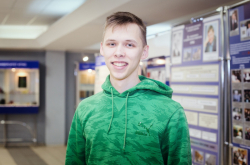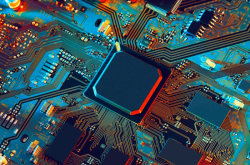What did you do before MEL Science?
My previous project, SPB Software, developed apps for mobile devices and smartphones. Back then, Microsoft was the king of mobile, and we were the kings of Windows Mobile, having created the sixth most-sold app in the world.
In 2011, you sold your company to Yandex, and in 2014, you founded MEL Science. Why did you decide to quit your programming career and start afresh in science?
I’ve always wanted to become a scientist, actually. You could say that was my childhood dream. When in school, I won a national physics competition and was determined to make science my life’s work. But then I decided to become a programmer instead.
Even so, all these years of working in IT made me see the fundamental importance of science: it is this sphere that rules our life, not business or politics. And this, in turn, made me realize that this is what I want to do, that this is the only thing that’s worth doing.
Your current company, MEL Science, produces chemistry kits for children, but there’s no secret that today, shops are flooded with similar offerings of ‘young chemist’ sets. What makes your products stand out from the many variations that exist on the market?
The main issue with the majority of similar chemistry kits is that they don’t actually explain to kids what causes this or that reaction to happen, which reduces a serious scientific experiment to a mere magic trick. From the very get-go, we’ve been moving in the opposite direction.
Our plan is that conducting a visually striking, spectacular experiment will make a kid interested in going behind the scenes of this process and delving into what exactly makes it go this way from the scientific point of view. In other words, we’re trying to visualize science. That’s why we are the only ones on the market to include virtual reality glasses in addition to the regular labware and tools. Apart from the kits, we develop VR-apps that help simulate a chemical reaction.

Why did you resort to VR?
Experience shows that things that you have to learn by heart don’t usually stay in your head for that long. What does linger, however, are those basic principles that give you an in-depth insight into how even the most complex processes work. We’re calling others to learn not by cramming on formulas, but by looking into what happens inside of the objects they study. And VR proves to be the best tool for that. When children conduct experiments, they can use VR to touch electrons and atoms and see how the chemical reaction they’ve just performed progresses step-by-step. Apart from offering a comprehensive explanation of a process, this insider-glance approach also manages to show the scientific logic behind it.
Why did you choose chemistry? There are lots of things in, for example, biology and physics that could also really benefit from using VR for explanation purposes.
It all started when I showed a couple of chemical experiments to my kids. It fascinated them, but I could clearly see from the expression in their eyes that they had zero idea of what was going on. I thought, I’m such a smart dad, I’ll just find a video on YouTube and everything will be great. But there were no videos that would explain to a kid how chemical reactions take place. Starting MEL Science, we wanted to fill that gap, especially given that we’d already had all the tools we needed to bring this idea to life.
Do you plan to branch into other scientific fields, then?
We sure do, and are already working on similar kits for the fields of biology and physics.
What are your secrets to being successful?
First and foremost, success involves lots and lots of hard work. Success comes to those who work hard; it’s a fundamental law of life. No one I know has achieved something without going out of their way to do it. That’s why my main advice to everyone would be, choose a sphere you find interesting and actually want to pursue, and start beavering away.
This interview was initially taken by Daria Lampadova for Megabyte Media




